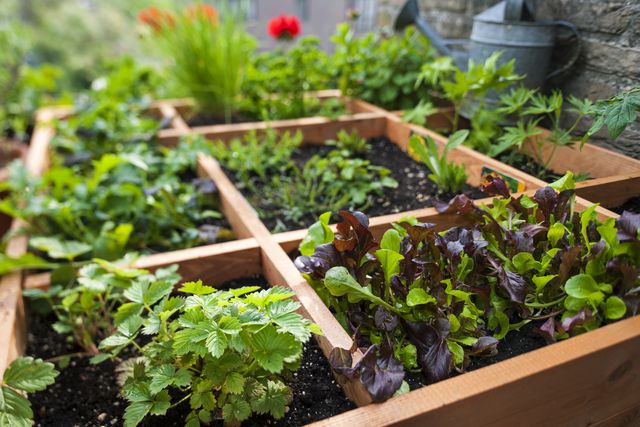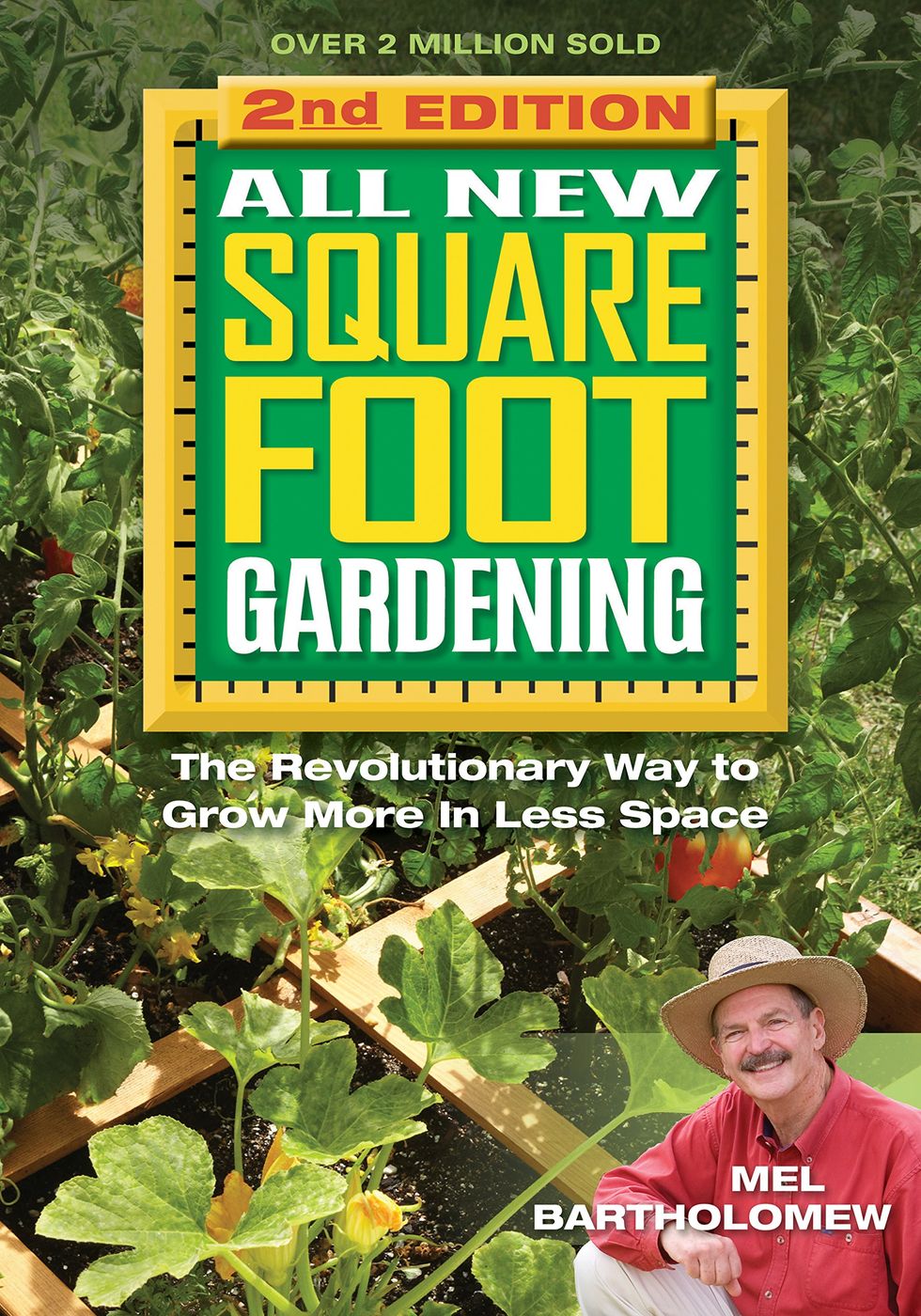Maybe you’ve seen them — those highly organized raised beds divided into perfect squares, each featuring their own variety of plant. They sure are look beautiful, but is this method — known as square foot gardening — effective? Find out what exactly it entails so you can decide if square foot gardening is right for you.
What is square foot gardening?
Square foot gardening is a simple method of creating small, orderly, and highly productive kitchen gardens. It was invented by backyard gardener, retired engineer, and efficiency expert Mel Bartholomew as a better way to grow a vegetable garden, and it became a huge hit when he introduced the idea to the gardening public in 1981 in his book Square Foot Gardening.
The basic concept: Create a small garden bed (4 feet by 4 feet or 4 feet by 8 feet are common sizes) and divide it into a grid of 1-foot squares, which you manage individually. Seeds or seedlings of each kind of vegetable are planted in one or more squares, at a density based on plant size (e.g., you’d plant about 16 radish seeds per square, but only one tomato plant). Since there are no paths, there is no wasted space, and the soil in the bed stays loose because you never step on it.
Twenty-five years later Bartholomew updated his methods with a new book, All New Square Foot Gardening, which advocates creating a 6-inch-deep frame or raised bed and filling it with a mixture of vermiculite, peat moss, and compost to plant in instead of garden soil enriched with compost.
So, now that you have a basic understanding of square foot gardening, let's move on to some of the benefits and the drawbacks.
The Pros of Square Foot Gardening
High yields: Intensive planting means you'll harvest a lot from a small space, so it's ideal for gardeners with limited room.
Fast set-up: Square foot gardening is a quick way to start a new garden (especially with the updated method using a raised bed filled with soilless mix), so it's great for first-timers. You can place your raised bed anywhere — even over grass or pavement — allowing you to build, fill, and start planting in a just few hours! Even if you work in your existing soil, you only need to prepare the planting areas, not the paths, so it takes a lot less time and effort.
Minimal regular maintenance: Since the garden is small and you have only a few specific tasks to do on any given day, you only need to invest a few minutes planting, maintaining, and harvesting at any one a time.
Less weeding: If you build a square foot garden filled with soilless mix, there will be few if any seeds in it (depending on the compost you use) and thus no weeds to pull for the first season. Weeds will, however, become more common over time as seeds blow or fall into the bed.
The Cons of Square Foot Gardening
High initial cost: The expense of building even a small raised bed and filling it with soilless mix adds up quickly. If you do have good soil to work with, stick with the original method and form in-ground garden beds for much less money.
Cramped beds: Small square foot garden beds aren’t ideal for crops that take up a lot of room, such as vining winter squash, asparagus, or a big planting of sweet corn. A smart approach: Grow herbs and more compact veggies such as carrots and radishes in your square foot garden and relegate large plants or plantings to a traditional rowed vegetable garden.
Insufficient depth: The 6-inch-deep beds recommended in Bartholomew's updated book are too shallow for most plants, especially if their roots can’t extend into the soil below. The solution: If you're gardening on top of pavement, make your frame at least 12 inches deep and fill it to the top with growing mix. If you're gardening on top of soil, use a layer of cardboard instead of weed-block fabric under the bed; the cardboard will slowly break down and allow veggie roots to extend into the soil below.
Lots of watering: The soil in raised beds tends to dry out faster and is harder to re-wet if it dries out, so you may find yourself watering every day in the heat of the summer to keep your plants growing well. To combat this, consider installing soaker hoses or some other type of drip irrigation system. Covering the surface of the soil with an organic mulch such as grass clippings or torn newspaper also conserves moisture.
More frequent maintenance : Because a square foot garden is planted so densely, weeds are a huge pain to remove once their roots get established. Your best bet: Remove when they're still tiny seedlings. This may require weeding a few times a week, but it beats wrestling with a full-grown monster. If you prefer hoeing a few times a season over hand weeding, stick with a more conventional vegetable garden design with long, wide-spaced rows.
The Bottom Line
Square foot gardening is a solid gardening method for any home gardener, especially beginners and people who are short on space. The drawbacks (while real) all have fairly simple solutions. Of course, it's all about your individual needs and preferences, but if it interests you, we say give it a whirl!















